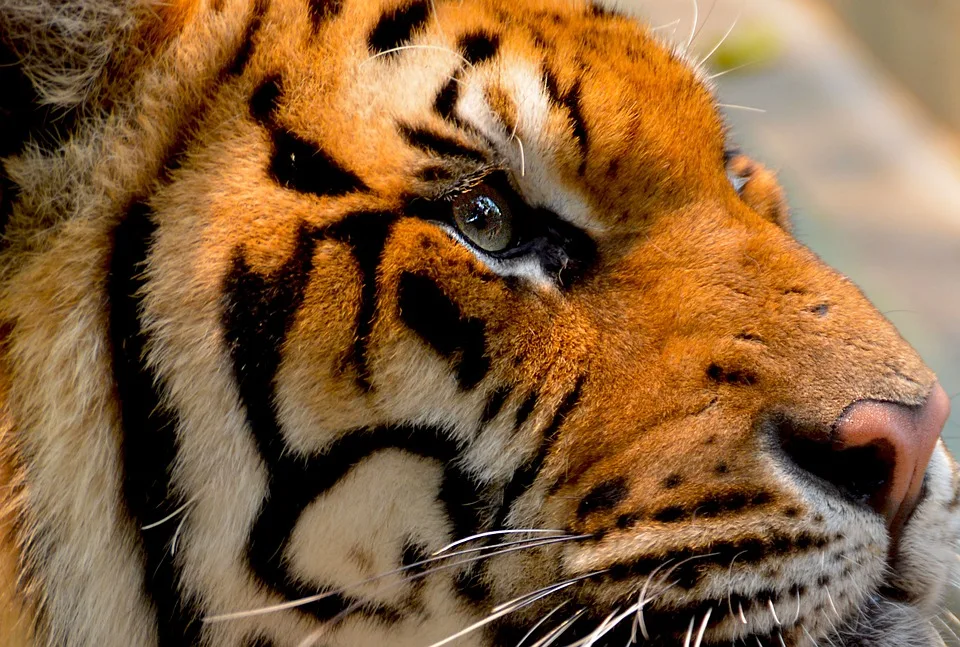Are you looking for the Where to See the Big 5 of India?
They consist of the Bengal tiger, Asiatic lion, Indian leopard, Great One-horned Rhino and the Indian Elephant.
The greatness of a nation and its moral progress can be judged by the way its animals are treated.”
Mahatma Ghandi
India is known for its tigers, but there’s a whole world of exotic wildlife you’ll see on interactive and captivating tours throughout the country. We’ve found Indian wildlife safaris that will convince you a trip to see the Big 5 of India is the holiday you never knew your soul needed.
Where to See the Big 5 of India
Intrigued? Read Ahead or jump to your favorite headline.
Where to see the Big 5 of India
#1 Tiger
#2 Asiatic Lion
About India
India offers a myriad of globally renowned destinations that see millions of tourists yearly. Its culturally dynamic backdrop of tourism attracts the attention of invested historians and travelers alike.
Wildlife, including the Big five of India, can be experienced beyond the setting of city intensity where natural landscapes set sights for sore eyes in fabled jungles and extensive and immersive biodiversity.
From Bandhavgarh National park, home to the largest percentage of Bengal Tigers to Brahmaputra Basin, a trans-boundary river which lines the border of China, Bangladesh and India.
Ecotourism is of integral importance to continue conservation of many indigenous species including the Big 5 of India, and especially the Bengal Tiger population, which after a century of decline, now rises in population.
There exist an impressive number of 166 National Parks in India, 99 of which are dedicated wildlife reserves. There are also 515 wildlife/animal sanctuaries throughout the country, many of which overseen by or collaborating with The tiger project.
Where to see the Big 5 of India
Above are the Northern states of India, home to many of the National parks and reserves which feature encounters with the Big 5 of India.
We have found some of the most exhilarating locations, guaranteed to find you encountering one of the big five of India. All tours have been carefully selected with ecotourism values and ethical treatment of animal always considered.
#1 Bengal Tiger
The Bengal Tiger, more than an animal of undeniable strength, agility and power, holds deeply rooted generational importance to the Indian culture.
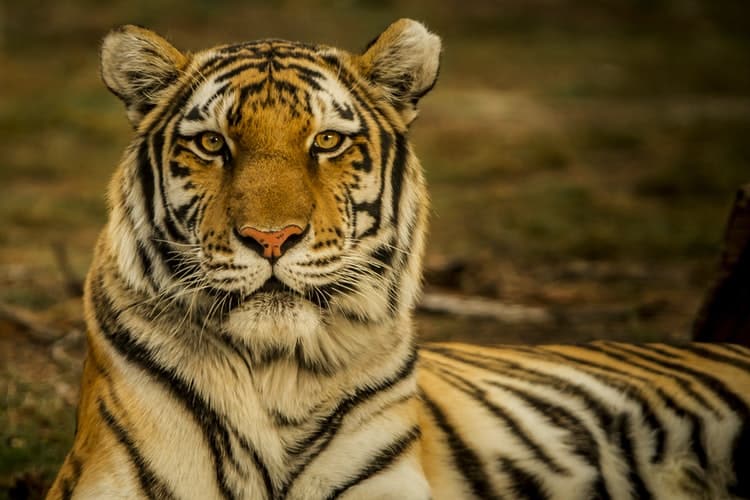
| Name :Panthera tigris tigris |
| Family : Felidae |
| Total Population : 2,226 |
| Kingdom : Indian Subcontinent |
| Conservation Status : Endangered |
Valued as a symbolic icon of natural heritage. The tiger, one of the largest land mammals in the world, has always intrigued and amazed those lucky enough to encounter their species in wildlife. The body length can vary between 2,5 and almost 3 meters in length.
This, in addition with their coat colouring is dependent on location and climate.Tigers are commonly solitary animals but may encompass territories of up to 7 females. Their diet is Carnivorous; known to hunt prey such as deer and even other predators.
Due to India holding the largest population of the sacred tiger, they have been at highest priority for the World Wildlife Fund ( WWF) India. In addition, Project Tiger was initiated in 1973 as a very important conservation program.
It has overseen the formation of more than 25 reserves for tiger monitoring and conservation and has been credited for the increase in tiger population by almost three times the initial population.
Where to see them
- Bandhavgarh National Park
- Ranthambore National Park
- Kanha National Park
- Jim Corbett National Park
- Satpura National Park:
Tour Operators
Jim Corbitt National Park tours
Nature Safari India
Tiger Conservation
Endangered: poaching is the biggest threat to the tiger population, the 2018 wild tiger census is expected to be more than 3,000—a number that has doubled since 2006.
WWF-India’s work for tiger conservation aims to maintain and restore tiger habitats and critical corridors while protecting the tiger and its prey base in the tiger landscapes within India, eventually leading to an increase and stabilization in tiger populations across the country.
What You Can Do?
Here are some practical steps you can take to help save the tiger:
Raising awareness where possible on active/ already existing tiger discussion forums and exchanging or comparing resources to most efficiently help in conservation efforts to protect the tiger and enforce strict regulations around tourist encounters with tigers.
This leads to the next point; Being a responsible tourist- leaving nothing but footprints. The wilderness habitat of the tiger should not be disturbed or polluted.
Pressuring change politically is also an impact stand. Choosing politicians that may represent positive change in environmental conservation or writing letters of urgency to ministers/ executive decision makers who could directly make a difference.
Help prevent wildlife trade:
Refuse/ condemn the sale and use of animal products that have been poached or trafficked and when informed, contact TRAFFIC, an international organization that works to aid the abolition of animal wildlife trade and poaching.
Reducing pressure on natural resources: Being conscious of the impact our lifestyles may have on the natural resources in our environments and will help protect the Big 5 of India. Donate to WWF India and the Tiger project.
Why is this Important?
This is vital because Indian wilderness eco systems are dependent on the existence of the tiger, without which food chains would collapse and the natural order of the ecosystem would be irreparably disturbed. An extinction of an apex/ top predator is indicative of a vulnerable ecosystem which could not exist further.
If you are interested in other big cats, take a look at our Big Cats and Where to See Them article.
#2 Asiatic Lion
The Asiatic lion is distinguishable as smaller than the African lion at weights of up to 190 kg and lengths of close to 3 meters.
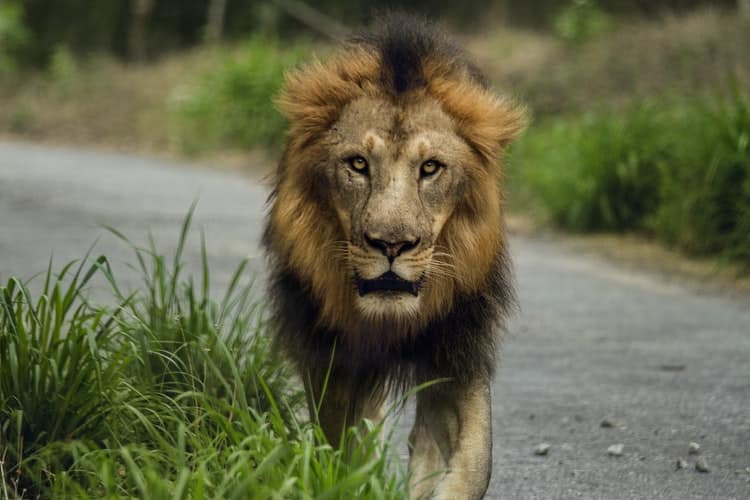
| Name: Panthera leo persica |
| Family: Felidae |
| Total Population: 523 |
| Kingdom: India |
| Conservation Status: Endangered |
Fur color ranges between various tones. Male lions manes’ do not cover their ears which are always visible. The Asiatic lion can be found within a limited range of the Gir national park and Indian state of Gujarat. Before this, historically the Asiatic lion inhabited much of western Asia and even the middle east until migrating up to northern India.
Once known as the Indian lion and even Persian lion based on historical location. Although the Lion has an endangered conservation status, the population is on a steady increase from 2010.
The Gir forest was declared an Asiatic Lion sanctuary from 1965, after which the surrounding area was declared protected reserve and out of reach to human activity or urban infringement and development.
Where to see them
- Gir national Park
Tour Operators:
Conservation Issues
Poaching and habitat fragmentation are among the leading challenges and threats facing the Asiatic lion. In addition, major roadways pass through the designated Gir Protected area, leading to temples which attract large numbers of pilgrims.
This human presence impacts greatly on the natural environment and migration of the lions. Lesson common threats have also included lions falling into unguarded well systems and unfortunate effects of genetic inbreeding due to single populations dominating one space.
WWF-India’s Initiatives
WWF India’s initiatives to protect Asiatic lions have supported barricading of 180 wells through Gujarat Forest Department. To strengthen the efforts of Gir PA towards managing conflict and poaching, WWF provided need-based support.
WWFIndia conducted study to assess habitat change over a period of 20 years and on the basis of the results, have made relevant adaptations to conservation in order to most efficiently aid the regrowth of lion population.
#3 Indian Leopard
The leopard is an animal that varies greatly in appearance based on location in the world.
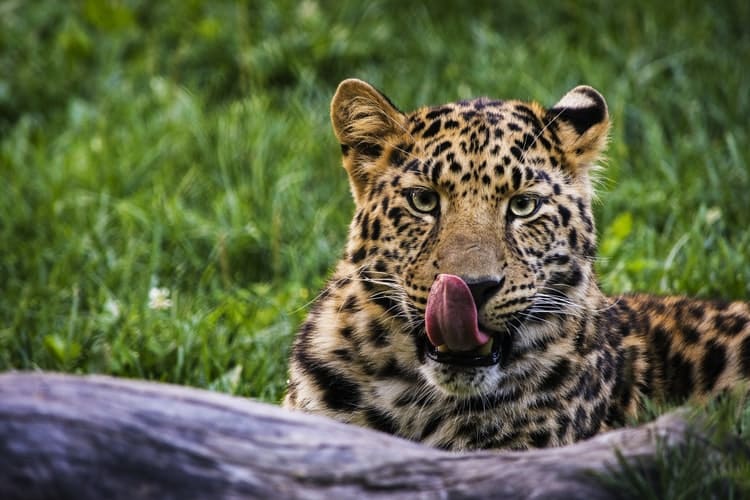
| Name: Panthera pardus fusca |
| Family: Felidae |
| Total Population: 14,000 |
| Kingdom: Indian Subcontinent |
| Conservation Status: Vulnerable |
Averaging between to 90 kg in weight and 2,5 meters in length, their stealth and stamina is undisputable. However leopards may grow beyond this in exception.
Their colouring is relatively constant with yellow upper body and white underbelly fur, decorated in dark spots over much of the body but it is the pattern of spots that remarks distinguish between leopards worldwide and even holds significance behind their names and characteristics. Another great place for the Where to See the Big 5 of India.
Where to see them
- Jawai Bandh Leopard Reserve Rajasthan
- Jhalana Leopard Safari Park
- Kumbhalgarh Wildlife Sanctuary
- Satpura National Park
- Bandipur National Park
Tour Operators
Natural World Safaris: Bandhavgarh National Park
Gurukripa Travels: Barnawapara Wildlife Sanctuary Tour
Conservation
The well known International Union for Conservation of Nature ( IUCN) officially classified the Indian leopard as vulnerable with population totals having rapidly plummeted.
This however, is directly related to the location of the leopard. The estimated 9800 Indian leopards is on the rise whereas a stark comparison grew for Sri Lankan and Persian leopards, where many subspecies have also declined to a critical level of conservation concern.
#4 Great One- Horned Rhino
The Indian rhino has a single horn, which is present in both sexes. It is the largest of all the Asian rhinos and fourth largest land mammal on earth.
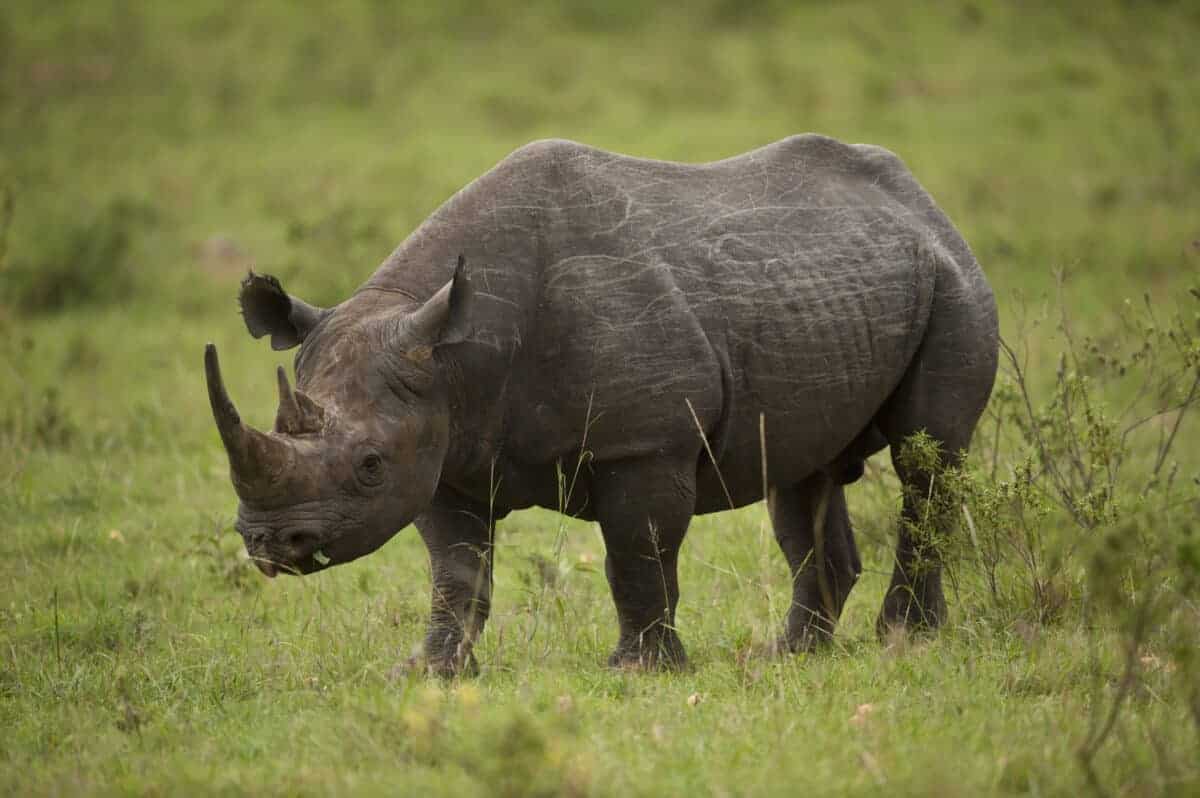
| Name: Rhinoceros unicornis |
| Family: Rhinocerotidae |
| Total Population: 3,555 |
| Kingdom: Indian Subcontinent |
| Conservation Status: Vulnerable |
The Indian rhinoceros, often regarded as the most amphibious among rhino species, boasts impressive abilities. It’s an adept swimmer and can sprint at speeds of up to 55 kilometers per hour for brief periods.
While it possesses excellent hearing and a keen sense of smell, its eyesight is relatively poor. Adult males typically weigh between 1,800 to 2,800 kilograms, while females are slightly lighter at around 1,600 kilograms. These rhinos are predominantly solitary creatures, although several may share the same patch of forest or water hole.
Breeding among Indian rhinos occurs throughout the year. The gestation period lasts approximately 16 months, and the newborns measure around 105 centimeters in length and weigh up to 60 kilograms.
These remarkable creatures find their most common habitat in alluvial flood plains and tall grasslands along the foothills of the Himalayas. While they were once widely distributed across the Gangetic plains, today, their range has dwindled to smaller habitats in the Indo-Nepal region, northern West Bengal, and Assam, highlighting the need for conservation efforts to protect their dwindling populations.
Where to see them
- Kaziranga National park Asam
- Jaldapara National Park, West Bengal
- Orang National Park, Assam
- Gorumara National Park, West Bengal
- Manas National Park, Assam
Tour Operators
Conservation
Vulnerable:
IRV 2020 programme: WWF-India has been working on rhino conservation for over four decades. As part of this work, in partnership with the Assam Forest Department and other organizations, WWF-India initiated the Indian Rhino Vision 2020 (IRV 2020) in 2005.
The vision of the program is to increase the total rhino population in Assam to about 3,000 by the year 2020 and just as significantly ensure that these rhinos are distributed over at least seven protected areas to provide long-term viability of an Assam population of the species.
#5 Indian Elephant
In India, the Asian elephant was once widely distributed throughout the country, including in states like Punjab and Gujarat.
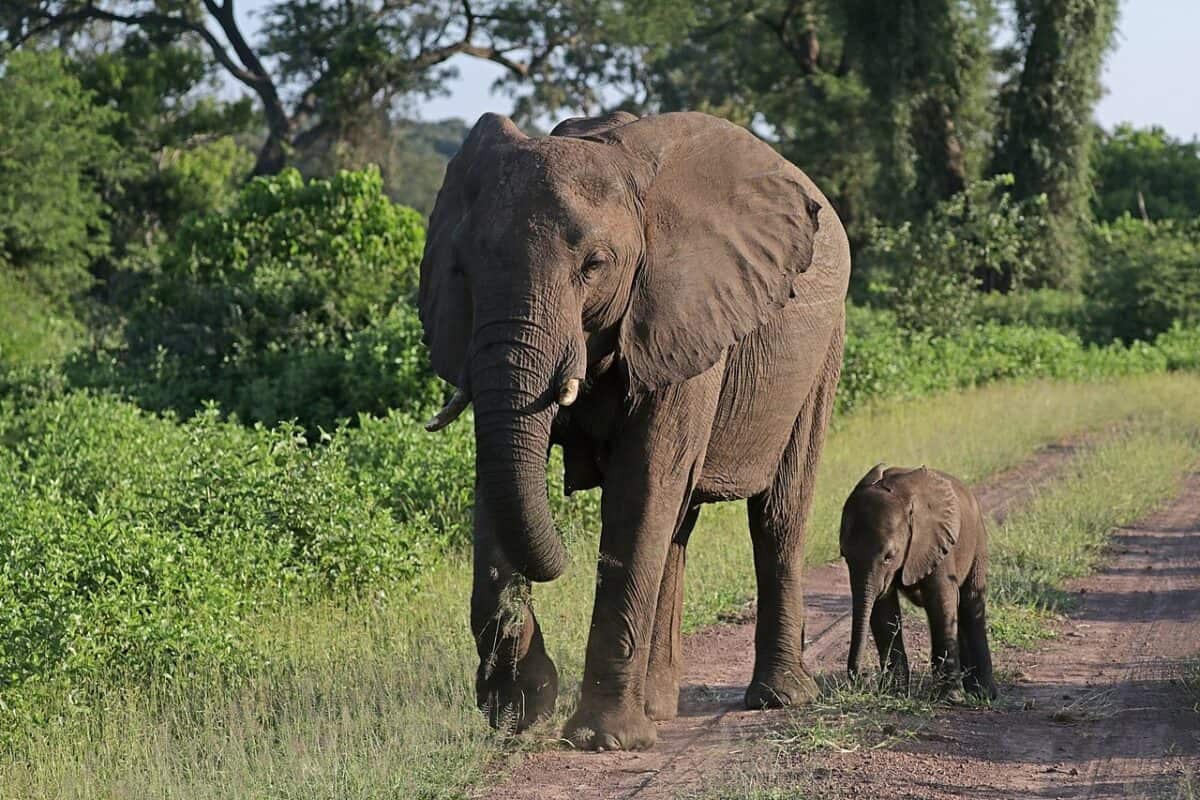
| Name: Elephas maximus indicus |
| Family: Elephantidae |
| Total Population: 31,368 |
| Kingdom: Mainland Asia |
| Conservation Status: Endangered |
Today, Indian elephants are found in four fragmented populations across south, north, central, and northeast India. These remarkable creatures exhibit extreme habitat adaptability, ranging from wet tropical evergreen forests to semi-arid thorn and scrub forests. However, the highest elephant densities are typically observed in tropical deciduous forests.
As “mega-herbivores,” elephants have substantial requirements, necessitating vast expanses of forests rich in food and water sources for their survival.
The Indian people have maintained a profound and enduring connection with elephants for thousands of years through their history of captive elephant management. This enduring bond has resulted in strong cultural and religious ties with these gentle giants, serving as a driving force for increased conservation efforts and the establishment of stricter tourism protocols, emphasizing ethical practices.
Due to their presence in a diverse range of habitats, elephants play a crucial role in safeguarding biodiversity within their territories. Their significant dietary needs also contribute to shaping the vegetation and trees in their environment, influencing habitat modification. Consequently, the conservation of these majestic creatures not only ensures their survival but also helps maintain the biological diversity and ecological balance of large forest tracts.
The Indian Elephant holds a special place in Indian legend, enjoying prominence in religion and religious festivals. In Hindi culture, the elephant is considered the living reincarnation of Ganesha, the god of beginnings. As such, elephants are revered and venerated, symbolizing prosperity and fertility in many religious traditions. They are frequently featured in paintings and portraits within people’s homes, playing a significant role in Indian cultural and spiritual symbolism.
Where to see them
- Jim Corbett National Park, Uttarakhand.
- Kaziranga wildlife sanctuary, Assam.
- Bandhavgarh National park, Madhya Pradesh.
- Kanha national park, Madhya Pradesh.
- Sundarbans national park, West Bengal.
- Periyar wildlife sanctuary, Kerala.
Tour Operators
Kipling Camp Kanha National Park
Conservation Status: Endangered
In India, the primary challenge confronting wildlife, particularly Asian elephants, is the dual threat of habitat loss and escalating human conflicts. The relentless growth of the human population and rapid economic development has exacted a heavy toll on elephant habitats, resulting in significant loss and fragmentation. Furthermore, the Anthropocene era has inflicted severe stress on these essential ecosystems, leading to extensive degradation.
These environmental transformations have given rise to an alarming surge in human-elephant conflicts, culminating in casualties among humans and retaliatory killings of elephants. Presently, this issue ranks among the gravest threats to the continued survival of Asian elephants in their native habitats.
As the once lush forest cover continues to fragment and degrade, elephants are forced to venture into plantations and crop fields in search of sustenance or while navigating between the diminishing forest patches. The devastation that a single elephant can inflict on a small farmer’s crops during a single raid exacerbates the tensions between these majestic creatures and the human communities residing in and around elephant habitats. This escalating conflict poses a formidable challenge to achieving harmonious coexistence between elephants and the neighboring human populations.
Poaching:
Even in areas where suitable elephant habitat persists, the shadow of poaching looms ominously. This perilous activity has inflicted a severe imbalance in the male-female sex ratio among elephant populations, given that only males bear tusks.
Poaching extends beyond ivory, encompassing the illicit hunting of elephants for their meat and other valuable products such as tail hair. This threat is particularly pronounced in regions like northeast India. Despite the international ban on ivory trade under the Convention on International Trade in Endangered Species, illegal markets, both domestic and underground, continue to fuel the unlawful poaching and trafficking of elephant products on a global scale.
In addition to poaching, managing human-elephant conflicts remains a daunting challenge. The encroachment of development into natural elephant habitats, coupled with human intervention, inadvertently leads to loss of life for both humans and elephants. These multifaceted challenges underscore the urgent need for comprehensive and sustained efforts to protect these magnificent creatures and their precious ecosystems.
Summary on Where to See the Big 5 of India
Ready to purchase your tickets to India yet? Post Corona travel will allow for a greater appreciation of the incredible wildlife that exists globally, but the Big 5 of India are formidable and beautiful animals that cannot be found together anywhere else in the world.

To be encountered with environmental consciousness and responsible engagement but to be admired and appreciated never the less. Fall in love with all that India has to offer you. Thank you for reading Where to See the Big 5 of India.
Join our Forum for free today!

- These are The 5 Largest Great White Sharks Ever Recorded - July 19, 2024
- The Surprising Benefits of Big Game Hunting - July 18, 2024
- $100k+ Hunting Experiences The Most Expensive Animals to Pursue - July 17, 2024

